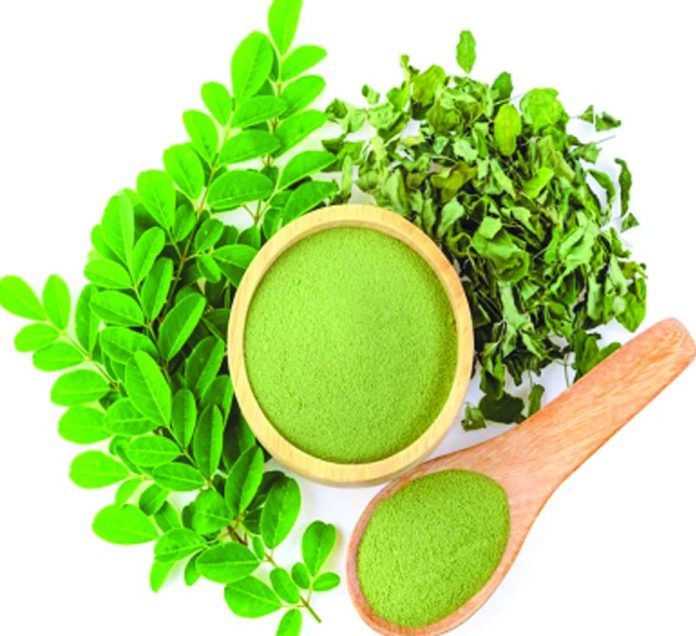Prof (Dr.) Vikas Sharma, Komal Sudan
Sohanjana, known as ‘the miracle tree’ is renowned for its ability to treat variety of ailments, including chronic diseases as its leaves contain 07 times higher vitamin C than oranges, 09 times more protein than yoghurt, 10 times more vitamin A than carrots, 15 times more potassium than banana, 17 times more calcium than milk, 25 times more iron than spinach.
Moringa oleifera, locally known as “Sohanjana” Horseradish, Mulangay, Sajna, Kelor, Saijihan, Marango, etc., belonging to the Moringaceae family, is a small, rapidly growing evergreen or deciduous tree up to 10 to 12 meters in height. Moringa is native to the sub-himalayan regions of North West India and grown indigenously in many regions of Africa, Arabia, South East Asia, the Pacific and Caribbean Islands and South America. It is a form of local Ayurvedic Indian medicinal plant which has become common in the tropical and sub-tropical regions. This plant is not only used in the form of vegetables by people in these regions, but is also known for its health enhancing qualities.
All parts of the Moringa oleifera plant are reservoirs of essential nutrients as well as antinutrients. The leaves of Moringa are sources of different minerals such as calcium, potassium, zinc, magnesium, iron and copper. Moringa leaves contain seven times higher vitamin C than oranges, ten times more vitamin A than carrots, seventeen times more calcium than milk, nine times more protein than yoghurt, fifteen times more potassium than banana, twenty-five times more iron than spinach. Other vitamins include beta-carotene, vitamin A, B which include folic acid, pyridoxine and nicotinic acid, vitamin C, D and E which are also found in Moringa oleifera. Flavonoids, tannins, sterols, terpenoids, saponins, anthraquinones, alkaloids and reducing sugar are also present along with glucosinolates, isothiocyanates, glycoside compounds and glycerol-1-9-octadecanoate. Moringa oleifera contains anti-inflammatory, anti-spasmodic, anti-hypersensitive, anti-tumour, anti-oxidant, anti-pyretic, anti-ulcer, anti-epileptic, diuretic, cholesterol lowering, renal, anti-diabetic and hepatoprotective properties.
Moringa leaves have rich nutrients, which contain chemicals that can regulate blood pressure. The leaves have low energy value or calorific value hence can be used for the obese persons. The preparations from the plant leaves enhance lactation among nursing mothers and the health of malnourished infants and the health of the general populace. The leaves have been helpful especially to patients with insomnia and those with wounds. Moringa can be prepared as poultice to treat inflammation where fresh Moringa leaves mashed and applied on affected glandular region or head for headache or respiratory system for bronchitis. The stem bark has been known to be used for treatment of wounds and skin infections.
The protein-rich leaves are consumed which provides the body with various amino acids including the essential amino acids. Moringa can boost memory and concentration, increase energy and strengthen skin and cure asthma, swollen throat, flu, urinary problems and diarrhea. The leaves of Moringa are cold, which is an anti-inflammatory property, thus decreases the fever, can decrease the metabolic rate of the body and therefore, it is assumed that the leaves of the plant have a cooling effect in the body. Sohanjana leaves also have a beneficial effect in lowering lipid profile, weight loss and also in improving the arterial plaque.According to Ayurvedic Medicine practice, the roots of Moringa are used in clinical practice to treat epilepsy, hysteria, cardiac diseases, colic, flatulence, and anxiety. The paste of the leave extract is massaged on the skin for paralysis and skin rashes. The juice of the bark is used as disinfect and also for treating ailments like fever, headache, stomach irregularity, back and muscular aches or pains, in treatment of burns and during labour pains. Moringa leaves are used to cure anemia because they contain a lot of iron. The flowers of Sohanjana are used to make tea, sauces and pastes. Moringa leaf extract can be used as a food preservative.
Moringa oleifera is a very versatile and helpful plant with exceptional therapeutic characteristics, providing a natural and sustainable treatment for a wide range of illnesses. However, its potential toxicity in high amounts underlines the importance of careful and regulated use, making it a vital yet potent resource in both traditional and modern medicine.
(The authors are from the Division of
Biochemistry, FBSc., SKUAST-Jammu)


